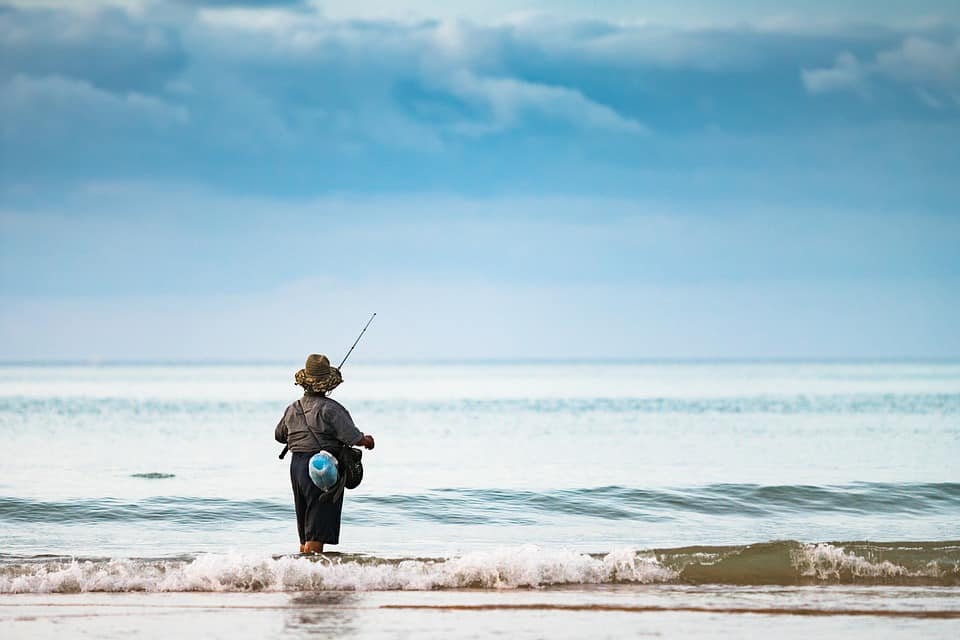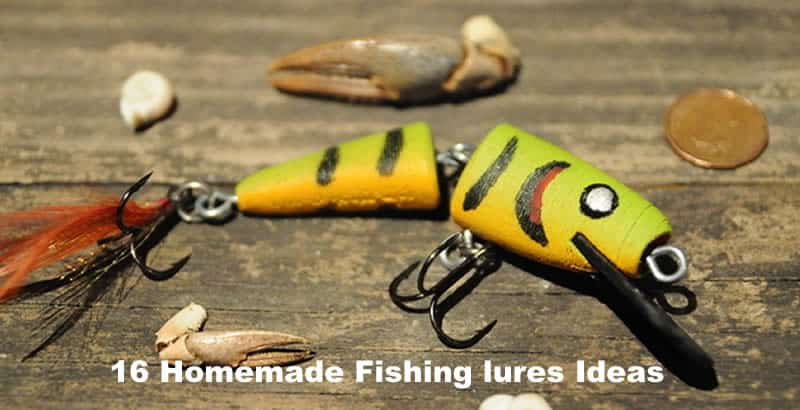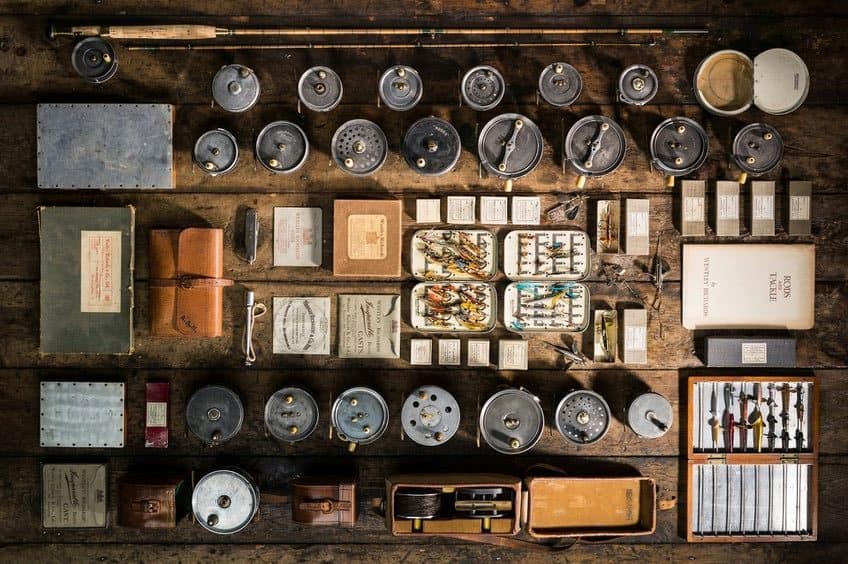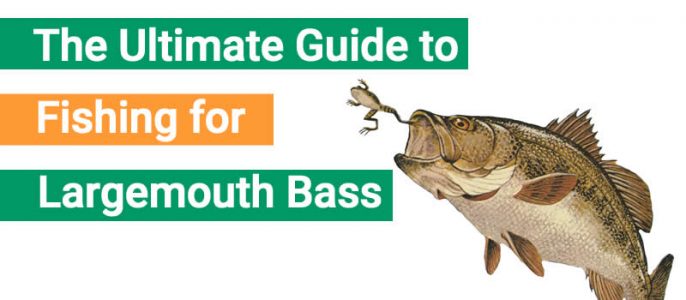If you buy via a link on this page, we may receive a commission, at no extra cost to you.Learn more
Versatile fishing techniques are one of the most appealing parts of fishing, and one technique you should be sure to learn is the Alabama rig. The Alabama rig, often called an Umbrella Rig or A-rig, is so effective that it is banned from elite bass fishing tournaments.
The school-like appearance of an Alabama rig makes it an excellent reactionary lure for bass searching for baitfish. The best part? Once you have the optimal setup, it is an extremely simple technique to fish.
Key Takeaway: an Alabama rig uses multiple wires attached to your line to mimic a school of baitfish. This article will highlight and describe the optimal setup for an Alabama rig.
However, casting and retrieving an Alabama Rig could become a tangled mess of discouragement if you do not take the time for an optimal setup. Today, we will dive into rigging and fishing the Alabama rig.
What Is an Alabama Rig?
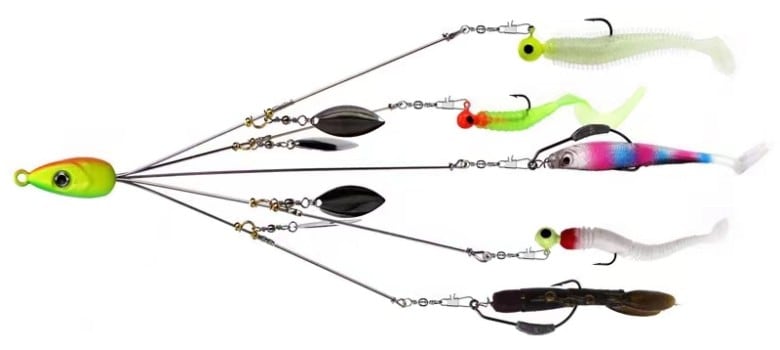
An Alabama rig is a condensed version of an umbrella rig, where multiple wires are harnessed to a single point and tied to your line. Depending on your state’s laws, an angler can attach multiple hooks and swimbaits to these wires to mimic a school of baitfish.
Alabama Rig Setup & Components
Although the Alabama rig is a simple technique, its many moving parts and gear can create frustration. Matching your line and rod to the weight of your Alabama rig will create optimal performance. We have provided a table below to ease the setup of what can appear as a complicated rig.
| Gear | Size or Type | Considerations |
| Wire | 5 wire-harnesses are most common for bass, but 3 wire-harnesses are also frequently used. | Look up your state’s regulations, as many limit the number of hooks allowed in the water. Be sure the top two wires are slightly bent up and out, the middle is straight, and the bottom two are slightly bent down and out. |
| Blades | A-rigs can come with or without blades. The choice to use blades can come down to preference. | Blades will work best in water when baitfish are in schools. A-rigs without blades are best in clear water without schooling baitfish. |
| Weight/ Jigheads | Use ⅛ to ⅜ ounce jigheads or weights. | For a balanced A-rig, place the bigger jigheads/weights on the bottom wires and lighter weights on the upper wires. |
| Lure/Trailers | 3.5 – 4 inch swimbaits will work best. If limited to only three hooks, use some lures as dummy baits. | If you use dummy baits, size them down compared to hooked swimbaits. Doing so will prevent tail-tugs on hookless baits. |
| Line | The most common lines for A-rigs include 60-80lb. braided line, or 12-20 lb. mono or fluorocarbon. | If you use fluoro, remember that it sinks quickly. Therefore, heavier weights may not be necessary. |
How to Have a Balanced Alabama Rig
To achieve a tangle, tumble-free cast, and retrieval, here are some quick tips when setting up your rig.
- Bending the wire: most people bend their wires right at the head, but doing so will decrease the wire’s lifespan. Instead, bend the wire about a quarter inch from the head- remember, the more you bend the wire back and forth, the less durable the wire becomes. Second, be sure that each wire is bent to the same shape. If not, your A-rig could roll throughout the retrieval, causing snags and tangled hooks.
- Weight disbursement: Place your heavier weighted hooks at the bottom of the A-rig. If you have ⅜ ounce jigs on the bottom, use ⅛ or 3/16 ounce jigs on the middle or top. If necessary, play with this setup until the A-rig is balanced. You can even have weightless baits on top of the A-rig if necessary.
Best Baits for an Alabama Rig
The most popular lures for an Alabama rig are swimbaits– though some people will use grubs successfully. When picking the right swimbait, simply “match the hatch.” In other words, match the lure to the local swimbait population. To simplify this, consider three things while picking out the perfect swimbait.
- Size: four-inch swimbaits are a great place to start, but having an assortment of sizes will help you strategically place your swimbaits on your A-rig’s wires. For example, you will want to put the larger swimbaits on the longer wires to increase your chances of hook-ups. Your smaller swimbaits can then be used as dummy baits on short wires to mimic a school of baitfish.
- Color: this is where you will want to match your local fishery’s baitfish or water conditions. Natural colors are a great place to start, but don’t be afraid to have one swimbait that sticks out from the rest- this will help entice a picky bass.
- Tail: a paddled tail will work best for your Alabama rig.
Best Rods & Reels for an Alabama Rig
By the time you have rigged up your Alabama rig, you have likely attached an additional 2-3 ounces to the end of your line. Because of this mass, a fast-action and heavy or medium-heavy rod will provide enough power and strength for an effortless day on the water.
Most Alabama rig anglers use at least a 7-foot rod paired with a baitcaster to ensure their arm doesn’t tire too quickly. You will want a reel with at least a 6:4:1 gear ratio, which will help you reel at the desired speed. Additionally, you want this reel to be bulletproof and hardy.
How To Fish A Alabama Rig
You can use an Alabama Rig from the shore or the boat, but a boat may cause fewer snags. If you have the correct setup, your primary focus will be depth and retrieval rate. Here are the basics:
- Start with the rod tip low, and make a circular motion by bringing the rod back and then forward while gradually raising the rod. Release the line as your rod tip reaches the top of that circular motion. A whip motion common with single lure rigs can cause tangles and break a weaker rod.
- After your A-rig hits the water, assume each one-count (roughly) represents one foot of sink rate. So if you’re fishing 10 feet of water, a count to 9 should get you near the bottom. Depending on your rig’s weight and line, this sink rate will vary slightly.
- In a medium to slow reel, retrieve your A-rig.
- Occasionally slow your rig to a near-stop, and give the rod one to two “pops” or twitches. This will entice any shy bass.
- A bass taking your A-rig will feel like a quick strike or heavy load on the rod. You don’t need a hard hookset like single lure rigs; lean back on the rod and reel faster while raising the rod tip.
When To Fish an Alabama Rig
Fish behavior will depend on your area, but late fall and winter are generally the most common time to fish an Alabama rig. This is because the water temperature drops, causing baitfish to migrate throughout the water column (deeper water or even into creeks). In response to this migration, bass will also move and follow the food. So if you see a group of shad, don’t be afraid to try your Alabama rig.
Where To Fish an Alabama Rig
Ambush points and deep structure will be a great place to try your A-rig. This includes points, rock ledges, grass lines, and sub-surface brush piles. Anything that provides structure to hold baitfish will commonly hold bass.
Summary
An Alabama rig will be the perfect lure to elicit a strike as baitfish school and migrate throughout the water column. Although casting and retrieving this rig is straightforward, be sure to take the time to balance your A-rig with the appropriate lures, weights, and wire shape. Once the setup and gear are correct, you are ready for a fun time on the water!

